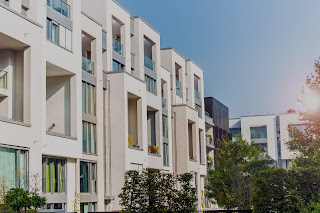Insurance Alternatives for Blocks of Flats Insurance
If you own, manage or are a resident in a block of flats, residential or tenement apartment block, you will need specialist insurance because regular buildings insurance strategy will not give the level of cover that is required to ensure complete protection.
Blocks of flats insurance, also known as block insurance, is a specialized insurance for blocks of apartments and flats that are built or converted. They are designed for diverse property types, including houses transformed into a large purpose built blocks and units.
If you own, manage or either you are a leaseholder, freeholder, or management company in a converted residential property or block of flats, then block insurance is the preferred choice of an insurance policy. The cover provided by regular systems will not frequently offer the specialist cover required for full protection and peace of mind. If you have a flat in a block, there are usually three insurance alternatives available.
Individual Flat Insurance
Most residence insurers will consider providing cover for each flat. Nevertheless, many do not offer cover as apartments, mostly those in older buildings. They are more likely to suffer a claim. There is also the policy of deciding whose policy pays for what damage when several flats are damaged in a single event, like rainwater coming into the room through the roof.
The Freeholder Arranges a Block Policy
In most of the western countries, there is usually a freeholder who owns the land that block of flats. Each apartment owner is provided with a lease, anywhere from 99 years to 999 years. Although they are commonly considered to “own” the flat, they are only leasing or renting, the land on which the unit sits. The freeholder is typically responsible for organizing the insurance cover, which the individual flat owners are paying their proportionate shares.
The Flat Owner from a Management Company or Residents Association
This is when the flat owners form a group, to manage the ownership of the building between them. These can be formalized, through limited number of the company, or an informal grouping in joint names of the owners. These can also appear when the flat owners have an absentee freeholder, but would also like to protect their property assets.
After choosing the preferred choice of insurance, you have to know what cover is available in a block of flats insurance policy.
The primary system will include the structure and buildings. All procedures will include public liability insurance, whenever anyone is injured, or property is damaged, because of the premises. For instance, if a roof tile falls off during a storm and unfortunately hit someone, this falls under the property owner's accountability. If another slate hit another person's car, then this is covered as well. If however someone visited their pals, who owned a flat, and was injured because the chair they sat on broke down, this does not fall under the block policy.
The building cover will also include adjustable glass, fitted baths, sinks, and toilets. Fixed glass, will also include fitted toilets, showers, and sinks. In addition to these insurance covers, buildings, property and glass owners liability, there are personal block insurance covers such as contents, loss of rental income and legal expenses.
Depending on your preferred choice, choose an insurance cover that will widely satisfy your needs.
Source: Click Here



Comments
Post a Comment